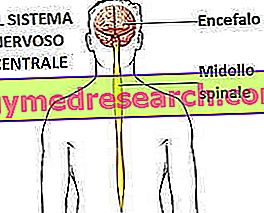By Dr. Masino Scutari
Only taking into account the proportions of the face rhinoplasty can give new harmony, Wanting at all costs a predetermined nose can be wrong.
a) nasal bone | b) triangular cartilage | c) alar cartilage | d) septum | e) accessory cartilages |
The first visit to the surgeon
- Before performing the rhinoplasty procedure it is necessary and important to carry out some meetings with the surgeon.
- The doctor, in fact, in a first visit observes the structures of the nose, and therefore also of the respiration: the back and the tip of the nose. The nasal cartilages (the alar, that is those on the wings of the nose, and the triangles placed just above the alaras), the septum (the dividing wall between the nostrils) and the turbinates (for breathing and the air circle).
- Then the surgeon goes to the planning phase taking into account all the evaluation criteria.
Definition
By rhinoplasty we mean the correction of the nose by surgical modification of its main components, namely: nasal bones, septum, cartilage.Types of treatment
We have two types of techniques:
- Traditional rhinoplasty, cutting the nose from the inside
- Open rhinoplasty, incising the skin of the nose and placing the skeleton in the open
Both techniques can be practiced under general or local anesthesia.
General information
The congenital or traumatic nasal anomalies manifest themselves with the so-called nasal hump, the tip downwards, the very dilated nostrils, etc.
Preoperative indications
- Photos
- Patients must have been fasting for at least 18 hours
- It is preferable for women not to perform surgery during the menstrual period, as this results in greater intra and post operative bleeding
Laboratory and instrumental tests required
Rx thorax, mascillofacial Rx with AP and AL projections, electrocardiogram, Blood count, Group, Azotemia, Glycemia, Dibucaine number, Cholinesterase, PT, PTT, Haemogenic tests, CPK, QPE, Es. Urine.
Surgical technique
The operation can be performed under general anesthesia or under local anesthesia; the techniques are two:
- open sky;
- overcast;
That is, the one with access to the nasal septum through the nostrils, the other with direct access, after overturning of the skin by incising the tip of the nose.

| PRE-OPERATIVE | POST-OPERATIVE |
Postoperative indications
A decongestant eye drop will be very useful. |
Treatment with antibiotics will be practiced, at least 2g a day for 5 days, and antiedemigeni. |
In the case of postoperative pain analgesics will be allowed. |
In the immediate postoperative period the patient will be able to vomit blood, this is due to the blood ingested during the operation, it has nothing to do with haemorrhagic problems. |
After 2 days from the intervention the very delicate lymphatic drainage carried out in the sub-orbital region will help to further deflate the nose. |
Duration of intervention
The rhinoplasty operation lasts from a minimum of 20 minutes up to 1 hour; the stay in the clinic is approximately 6 hours (in day ospital).
Ache
Generally there is no pain either during or after the operation. The patient has only a slight discomfort of a limited nasal breathing due to the insertion of tampons inside the nostrils which are normally removed after 24/48 hours.
Recovery
Some hours of hospitalization in a day-hospital regime.
dressings
After the operation, a protective chalk will be applied on the back of the nose that will be removed after a period of 5-6 days.
Scars
Since the techniques used are traditional rhinoplasty, incising the nose from the inside, and the Open rhinoplasty technique, incising the skin of the nose and placing the skeleton in the open, therefore do not involve any scar.
Recovery
The patient can return to work after 3-7 days.
Rhinoplasty costs
3, 000 - 6, 000 euros
Each surgical procedure has a price determined by the individual physical characteristics, the complexity of the case and the operating times.



